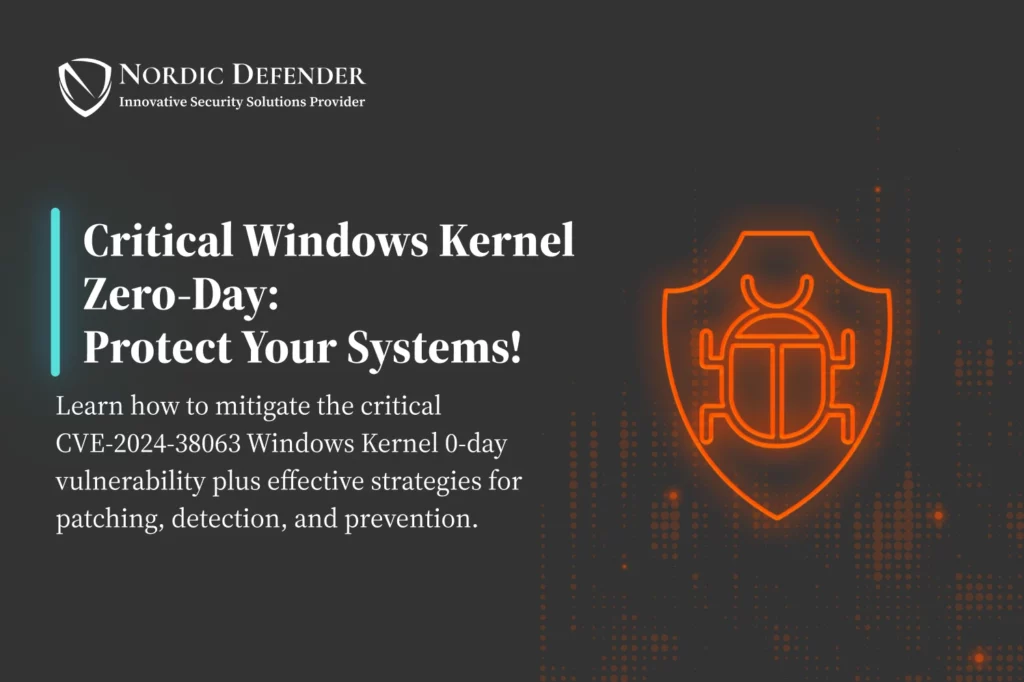In August 2024, Microsoft released critical updates addressing 90 vulnerabilities, including six zero-day flaws, with the most notable being CVE-2024-38063. This zero-day vulnerability, which affects the Windows Kernel, is actively exploited and poses significant risks to system security. Let’s delve into the implications of these vulnerabilities and explore strategies to strengthen your cybersecurity defenses.
Understanding the Vulnerabilities
- Zero-Day Vulnerability:
- CVE-2024-38063 – Windows Kernel Vulnerability: This critical flaw allows attackers to execute arbitrary code with kernel-level privileges. The risk here is profound—complete system compromise becomes possible, granting attackers the highest level of access to the affected machine.
- Remote Code Execution (RCE) and Privilege Escalation:
- RCE Vulnerabilities: These allow remote execution of malicious code, often leading to severe consequences like ransomware deployment or unauthorized access to sensitive data.
- Privilege Escalation: Attackers can elevate their access rights within a system, moving laterally and gaining control over additional resources.
Strategic Approaches to Mitigation and Prevention
1. Implement a Robust Patch Management Strategy:
- Automated Patching: Leverage automated tools to ensure prompt deployment of patches, especially those addressing vulnerabilities like CVE-2024-38063. Automated systems help avoid delays that could be exploited by attackers.
- Patch Testing: Test critical patches in a controlled environment before widespread deployment to avoid potential operational disruptions.
2. Enhance Threat Detection Capabilities:
- Behavioral Analytics: Implement threat detection systems that use behavioral analytics to detect abnormal activities associated with CVE-2024-38063 and similar vulnerabilities. This could include monitoring for unusual process behavior or unexpected network communications.
- Threat Intelligence Integration: Continuously integrate threat intelligence feeds into your security operations to stay updated on the latest exploitation methods related to CVE-2024-38063.
3. Strengthen Network Segmentation and Access Controls:
- Micro-Segmentation: By dividing your network into smaller, isolated segments, you can contain breaches and limit attackers’ ability to exploit vulnerabilities like CVE-2024-38063 across your infrastructure.
- Least Privilege Principle: Review access rights across your organization, ensuring that users only have the minimum privileges necessary to perform their tasks, reducing the potential impact of a successful exploit.
4. Proactive Employee Education and Awareness:
- Phishing Simulation Training: Given the role of social engineering in delivering exploits like CVE-2024-38063, regularly train employees to recognize and respond to phishing attempts, thereby reducing the risk of initial compromise.
- Zero-Trust Culture: Promote a zero-trust approach, where every access request is verified and scrutinized, no matter its origin, helping to mitigate the risk of internal and external threats.
5. Continuous Monitoring and Incident Response Planning:
- 24/7 Monitoring: Employ round-the-clock monitoring solutions to detect and respond to exploitation attempts targeting vulnerabilities such as CVE-2024-38063. SIEM systems can be invaluable here, providing real-time alerts and insights.
- Incident Response Drills: Regularly conduct drills simulating attacks that exploit vulnerabilities like CVE-2024-38063, ensuring your team is well-prepared to handle real-world incidents effectively.
Conclusion
The release of patches addressing critical vulnerabilities like CVE-2024-38063 highlights the dynamic and ever-present threats faced by organizations. Immediate patching, combined with advanced detection, prevention strategies, and a proactive security culture, is essential to maintaining a robust cybersecurity posture. By adopting these measures, organizations can significantly reduce their exposure to these vulnerabilities and protect their critical assets from potential exploitation.
